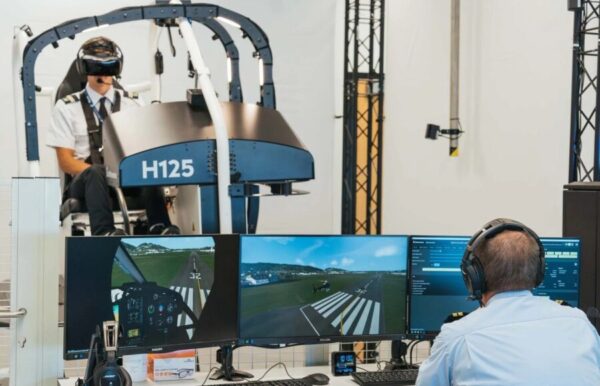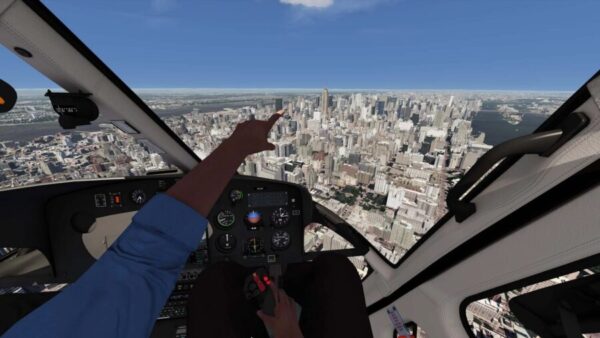
In Virtual Reality News
August 6, 2024 – Loft Dynamics, a provider of virtual reality (VR) flight simulation training devices (FSTDs), has recently announced that the Federal Aviation Administration (FAA) has qualified its VR simulator, making it the first FAA-qualified VR FSTD in the United States, according to the company.
U.S. helicopter pilots can now train and receive credit toward pilot ratings on one of Loft Dynamics’ FAA-approved VR FSTDs. Loft Dynamics stated that the qualification allows the simulator to be used not only for training in engine failures, abnormal and emergency procedures, and instrument approaches, but also for challenging maneuvers such as sling load operations, pinnacle operations, and more.
The company noted that the FAA’s qualification process requires FSTDs to go through a rigorous evaluation and meet extensive operational requirements. The FAA evaluated Loft Dynamics’ VR simulator using Loft Dynamics’ Airbus-approved H125 VR FSTD at Marshall University.
Qualified as a flight training device, the H125 VR simulator features a full-scale virtual replica cockpit, a panoramic 360-degree view, verified flight modeling, and a six-degrees-of-freedom motion platform that accurately simulates flight visuals, movements, and scenarios. The company noted that its FSTD is smaller and significantly more cost-effective than traditional simulators.

All pilots in the U.S. are required to train regularly in an aircraft or flight simulator. Loft Dynamics stated that the qualification of its flight simulator marks a crucial step in advancing this pilot training in the U.S., enabling more operators conduct essential training and further cementing the role of VR in the future of pilot training. Additionally, the company stated its technology is helping to address a growing pilot shortage, which is also part of the reason why regulatory agencies are embracing and mandating the use of FSTDs, according to Loft Dynamics.
Commenting on this, Fabi Riesen, Founder & CEO, Loft Dynamics said: “The FAA’s and EASA’s unprecedented qualifications of our technology reinforce the safety and fidelity of VR for pilot training and provide a tangible path to solve the world’s pilot shortage and cultivate the next generation of high-quality pilots.”
Last year, the FAA installed Loft Dynamics simulators at its William J. Hughes Technical Center to advance the safety, efficiency, and environmental sustainability goals of its Next Generation Air Transportation System (NextGen). As part of this initiative, the agency uses the simulator to conduct vertical flight safety research, including engaging hundreds of test pilots to fly the simulator.
Loft Dynamics added that FAA’s approval of this first VR simulator shifts pilot training paradigms, expanding access to more immersive, customizable, and scalable training solutions. Outside the U.S., the company’s VR simulators have also achieved qualification from the European Union Aviation Safety Agency (EASA).
For more information on Loft Dynamics and its virtual reality solutions for pilot training, please visit the company’s website.
Image credit: Loft Dynamics
About the author
Sam is the Founder and Managing Editor of Auganix. With a background in research and report writing, he has been covering XR industry news for the past seven years.
